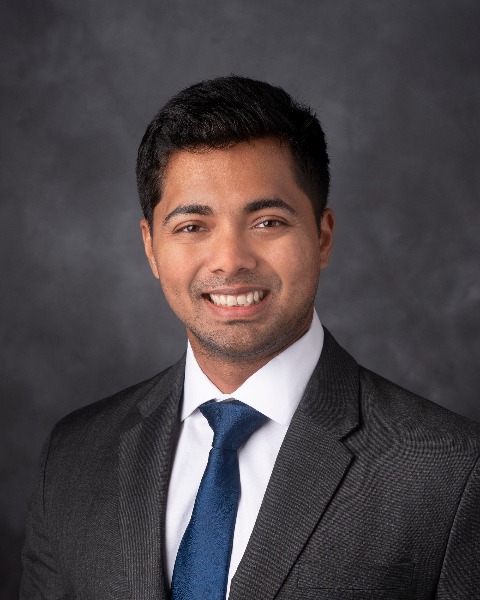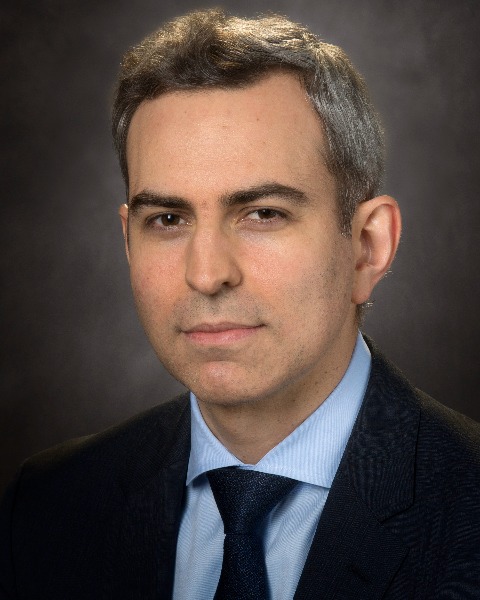SIR 2025
General IR
Scientific Session
Spatial Computing with the Apple Vision Pro in Minimally Invasive Procedure Simulation: A Non-Inferiority Study
- SC
Sydney Cooper, DO
Resident
University of Texas at Houston, United States - AJ
A. Kyle Jones, PhD
Professor
The University of Texas MD Anderson Cancer Center, United States - RS
Rahul A. Sheth, MD, FSIR
Associate Professor
MD Anderson, United States 
Koustav Pal, MBBS (he/him/his)
Postdoctoral Research fellow
MD Anderson, United States
Bruno C. Odisio, MD, PhD, FSIR (he/him/his)
Professor
MD Anderson Cancer Center, United States- MB
Mark Blaylock, None
Director, Education Core Facilities
MD Anderson Cancer Center, United States - SK
Shelita Kimble, BS
Director, Simulation Center
MD Anderson Cancer Center, United States - JC
James Cavalier, PhD, MBA, RN
Associate Vice President for Education Operations
MD Anderson Cancer Center, United States - JB
Justin Bird, MD
Associate Professor, Department of Orthopedic Oncology
MD Anderson Cancer Center, United States - DR
David Rice, MBBS
Professor, Department of Thoracic and Cardiovascular Surgery
MD Anderson Cancer Center, United States - DS
Daniel Shoenthal, BA, MS
Chief Innovation Officer
MD Anderson Cancer Center, United States - EP
Emil Patel, None
Executive Director of IT Infrastructure
MD Anderson Cancer Center, United States - SG
Sanjay Gupta, MD, FSIR
Professor and Chairman of the Department of Interventional Radiology
MD Anderson Cancer Center, United States - JS
Jeffrey Siewerdsen, PhD
Professor
MD Anderson Cancer Center, United States - JK
Joshua D. Kuban, MD, FSIR, MA
Associate Professor
MD Anderson Cancer Center, United States
Presenting Author(s)
Author/Co-author(s)
This study aims to evaluate the feasibility of wearing the Apple Vision Pro (AVP), a mixed-reality headset that integrates augmented and virtual reality while performing minimally invasive procedures. While studies have demonstrated that spatial computing technology can improve surgical precision and reduce the risks of surgical complications, to our knowledge, no studies have specifically addressed the impact of the AVP on task performance during simulated image-guided procedures {1,2,3,4}.
Materials and Methods:
Thirteen diagnostic and interventional radiology residents performed image-guided central venous catheter placement, thoracentesis, and paracentesis on simulation models. Each participant completed a non-timed practice, followed by the procedures once with and once without the AVP, in a randomized order. The total procedure completion times were compared with a paired t-test. Subsequently, we administered a questionnaire, utilizing a Likert scale (1-10), to obtain quantitative operator data on the perception of the headset.
Results:
The participants’ completion times were analyzed. For paracentesis, the mean time was 47 seconds with the AVP headset compared to 57 seconds without (p=0.129). For thoracentesis, the mean time was 58 seconds with the AVP, compared to 63 seconds without (p=0.563). For central venous catheter insertion, the mean time was 168 seconds with the AVP, compared to 132 seconds without (p=0.059). Across all tasks, there was no statistically significant difference in procedure times, suggesting the AVP headset does not affect procedural efficiency.
Quantitative feedback demonstrated a mean Likert score of 7.9 for positive overall experience and 7.8 for safety while performing procedures, where higher scores reflect a more favorable perception. Conversely, scores of 6.1 for device heaviness, 3.5 for hand-eye coordination, and 3.7 for perceived negative impact on procedure performance suggest a poorer experience for these aspects.
Conclusion:
The AVP headset demonstrated non-inferiority in minimally invasive procedure simulations with comparable procedure completion times. While participants noted the heaviness of the headset and that hand-eye coordination was somewhat impaired, they reported a generally favorable experience using the headset and most felt confident performing minor procedures while wearing the device. These results suggest that spatial computing headsets have potential applications in image-guided procedures and provide the basis for further evaluation in real-world operative settings.


.jpg)